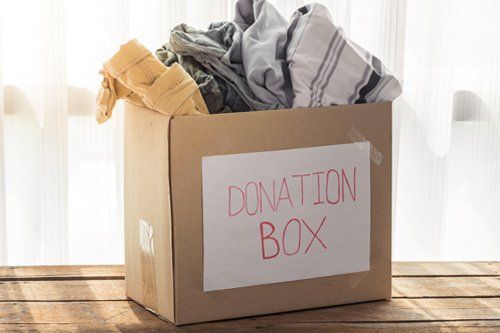7 Tips to Improve Your Move With Charitable Donations
- By Admin
- •
- 17 Apr, 2018

A residential move often reveals that you own more things than you want to transport to your new house. Charitable donations are the ideal solution to deal with your unwanted items, and you can feel good to know that you are helping to preserve resources and giving back to the community at the same time.
While the donation process at most charitable organizations is fairly simple, you still have a few steps to take to sort and transport your belongings. You can use these tips to reduce the size of your move and distribute your unwanted household goods to the appropriate people and services in your community.
1. Start With the Appliances and Furniture
Large furniture and appliances tend to take up the most space on the moving truck, and you may no longer need some of these items if you are moving to a smaller place. Identify items such as couches and tables that you prefer to donate, and keep in mind that some organizations take appliances that don't work.
If you plan to donate large items, then make sure to update your online moving quote information so that you get the most accurate estimate possible for the cost of your move.
2. Identify Unneeded Small Items
With the big stuff out of the way, you can now begin to sort through each room to find items that are no longer necessary for your lifestyle. Check your closets for outdated or outgrown clothing and set these to the side.
In your kitchen, look for duplicate items or small appliances that you never use. For instance, slow cookers, double-burner cooktops, and toaster ovens are all kitchen appliances that a charitable organization might be able to distribute to people in need.
3. Prepare the Items for Donation
Although many charitable organizations clean items before they sell or distribute them, you should still do a little prep work just in case. Wash all of the clothing and linens and pack them neatly for the donation. Wipe down any furniture or appliances to remove things such as food residue that could attract pests.
If you have electronics to donate, then you may need to erase any personal data and information before you make the donation.
In most cases, enacting a factory reset after backing up your data using the operating system will suffice. However, you may need to take additional precautions such as removing the hard drive from your computer if your electronics contain sensitive information or if you are not familiar with the donation facility.
4. Find a Charitable Organization
Today, you can find many organizations in your community that accept donations. However, you may want to narrow down your list to ones that prefer the items that you have to donate. Thrift shops, churches, and shelters are a few of the main charitable organizations that frequently take contributions.
5. Check the Organization's Donation Guidelines
Gently used clothing and household goods are usually accepted at most donation centers. However, you may want to check the guidelines if you have specialty items such as office equipment or a crib. In some instances, certain goods may not be accepted for safety purposes, and it's best to know such restrictions before you try to drop items off.
6. Make Arrangements for Distribution
Once you have identified what you want to donate and the organization it should go to, you are ready to make your final arrangements. Contact the organization to find out whether they prefer to pick up items or have you drop them off. If large items won't fit in your vehicle, arrange for a moving truck rental.
7. Keep the Appropriate Records
In some cases, you can claim charitable contributions as tax deductions. If you plan to claim a contribution on your taxes, then ask for a written acknowledgment that lists the name of the organization, the monetary value of the contribution accepted, and the date. Then keep the documentation in your tax files.
At Superior Economy Moving, we believe that giving back to the community helps everyone. Give us a call to get started planning your move today.
Superior Economy Moving
22107 Cajun Ct.,
Canoga Park, CA 91303
Business Hours
Monday-Saturday: 8 a.m.-5 p.m.
Email: economy@roadrunner.com
Free Quotes



